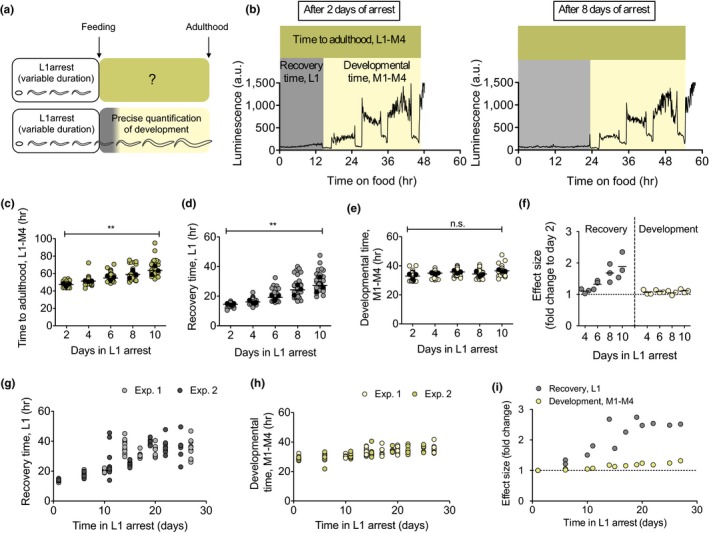Figure 1.

Prolonged quiescence delays recovery time. (a) Past and current experimental designs to study the consequences of prolonged L1 arrest. (b) Representative plots of the duration of development for animals arrested as L1 for 2 days (left) and 8 days (right). Recovery time (L1) is defined as the time between the addition of food to starved L1 animals and the initiation of the first molt. Developmental timing is defined as the period between the beginning of the first molt and the end of the last molt, or initiation of adulthood (M1‐M4). Total time to reach adulthood is the time between the addition of food and the end of the last molt (L1‐M4). (c–e) Total time to adulthood (c), recovery time (d), and developmental time (e) for larvae arrested for 2–10 days. Average values per experiment are indicated with a black dot, and values from single animals are indicated with a colored dot. We performed one‐way ANOVA on the averages of 3 biological replicates (** p < .01). (f) Effect size of prolonged starvation in recovery and development. The data show the ratio of the average duration relative to day 2, for the three independent experiments shown in 1c‐e. (g–h) Recovery (g) and developmental (h) time of L1 arrested up to 27 days. The plots show data from two independent replicates. (i) Effect size of prolonged starvation in recovery and development
